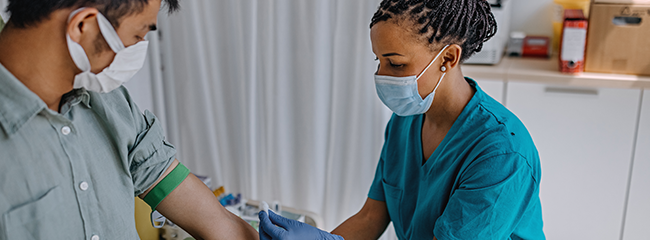Written by Alberta Guy, RN, BSN, Clinical Consultant, Professional Services

Patient safety plays a critical role in healthcare, but it is more than just the physical, psychological, and social well-being of patients as they experience treatments and services. It is also the commitment to provide medical care that works tirelessly to avoid harm and errors, protecting patients during diagnosis and treatment, and prioritizing their health above all else.
To consistently focus on patient safety requires reliable education of staff on new advances in safety procedures. Below are 5 key areas where technology and education can have a huge impact on patient safety:
1) Digital Healthcare Management
Digitalization of healthcare data is no longer a mere convenience: it's now an essential tool for providing the highest quality of patient care. By making sure data synchronization, document accessibility, and data accuracy are prioritized in our medical systems, we can immediately see a reduction of errors in addition to real financial savings that can be reinvested into improved safeguards against costly mistakes. This ultimately ensures better outcomes, and peace of mind, for both patients and practitioners alike.
2) Utilization of Monitoring Technology
We all know our providers are asked to care for multiple patients, and for nurses this often means at the same time. By offering our caregivers monitoring technology that can provide real-time supervision avoids potential safety incidents. With the help of this innovative solution, staff can easily log all essential details from who’s in the patient's room and when they arrived or left; medical notes taken; services rendered; and the names and details of those receiving care. The utilization of monitoring technology aids in streamlining operations while ensuring top-quality standards are consistently met.
3) Informing Patients on a Consistent Basis
It’s clear that healthcare workers play a vital role in ensuring patient safety, but patients are also an integral part of their own health and safety. Educating staff to take the time to empower patients and help them understand their treatment can prevent medical errors. Patients don’t need to have a medical degree – providers can ensure comprehension of next steps through simple recall questions – providing patients the best chance at positive outcomes.
4) Better Communication for Faster Response
Communication plays a central role in healthcare. From everyday operations and routine check-ups, to responding quickly during an emergency — effective, timely communication is key to ensuring patient safety. To enhance the quality of interpersonal communications within your hospital, regular feedback should be exchanged among those involved in the institution’s care. It is also vital that healthcare workers are able to act quickly upon any given situation when they need help or information. For better communication that guarantees patient safety, consider implementing a system that allows around-the-clock responses from medical professionals —preventing important updates from being missed.
5) Verify Medical Procedures to Guarantee Patient Safety
Medical errors can have devastating consequences for both the patients and medical staff involved. To prevent such occurrences, healthcare institutions should utilize various verification processes. Multiple verification processes act as a safeguard that reduces the risk of mistakes being made during all stages of patient care, including during diagnosis, treatment, and procedures. Implementing verification systems such as electronic barcode specimen collection devices and smart pump integration can be adopted to minimize errors in patient identification and medication administration. Additionally, practicing the Universal Protocol prior to all procedures ensures that healthcare professionals can address any missing information or discrepancies pre-procedure.
Patient safety is of paramount importance when striving to provide the best care possible. At iatricSystems™, we understand the importance of patient safety and are committed to helping hospitals create an environment of optimal care. To learn more about our solutions that aim to make healthcare safer for all involved, please contact us at info@iatric.com.